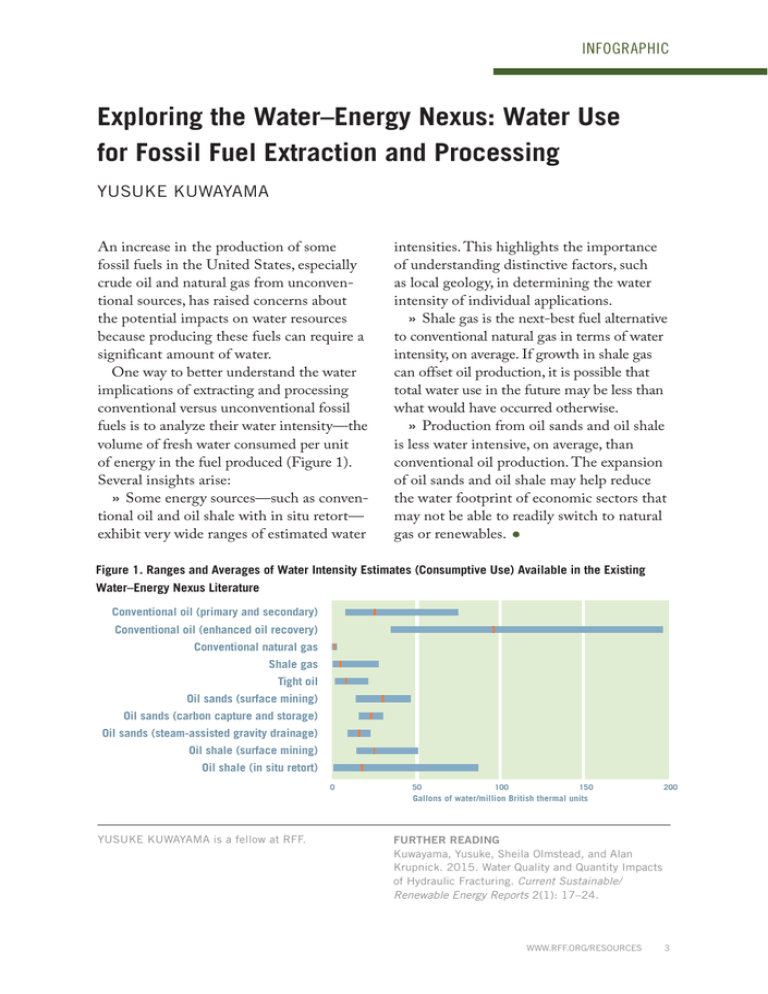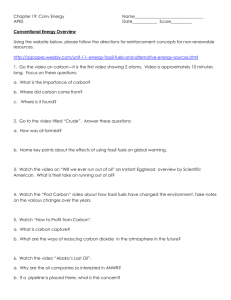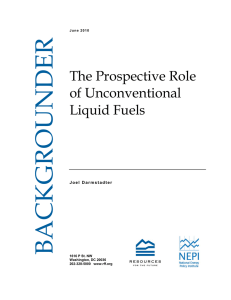Exploring the Water–Energy Nexus: Water Use YUSUKE KUWAYAMA
advertisement

INFOGRAPHIC Exploring the Water–Energy Nexus: Water Use for Fossil Fuel Extraction and Processing YUSUKE KUWAYAMA An increase in the production of some fossil fuels in the United States, especially crude oil and natural gas from unconventional sources, has raised concerns about the potential impacts on water resources because producing these fuels can require a significant amount of water. One way to better understand the water implications of extracting and processing conventional versus unconventional fossil fuels is to analyze their water intensity—the volume of fresh water consumed per unit of energy in the fuel produced (Figure 1). Several insights arise: »» Some energy sources—such as conventional oil and oil shale with in situ retort— exhibit very wide ranges of estimated water intensities. This highlights the importance of understanding distinctive factors, such as local geology, in determining the water intensity of individual applications. »» Shale gas is the next-best fuel alternative to conventional natural gas in terms of water intensity, on average. If growth in shale gas can offset oil production, it is possible that total water use in the future may be less than what would have occurred otherwise. »» Production from oil sands and oil shale is less water intensive, on average, than conventional oil production. The expansion of oil sands and oil shale may help reduce the water footprint of economic sectors that may not be able to readily switch to natural gas or renewables. · Figure 1. Ranges and Averages of Water Intensity Estimates (Consumptive Use) Available in the Existing Water–Energy Nexus Literature Conventional oil (primary and secondary) Conventional oil (enhanced oil recovery) Conventional natural gas Shale gas Tight oil Oil sands (surface mining) Oil sands (carbon capture and storage) Oil sands (steam-assisted gravity drainage) Oil shale (surface mining) Oil shale (in situ retort) 0 50 100 150 200 Gallons of water/million British thermal units YUSUKE KUWAYAMA is a fellow at RFF. FURTHER READING Kuwayama, Yusuke, Sheila Olmstead, and Alan Krupnick. 2015. Water Quality and Quantity Impacts of Hydraulic Fracturing. Current Sustainable/ Renewable Energy Reports 2(1): 17–24. WWW.RFF.ORG/RESOURCES 3








